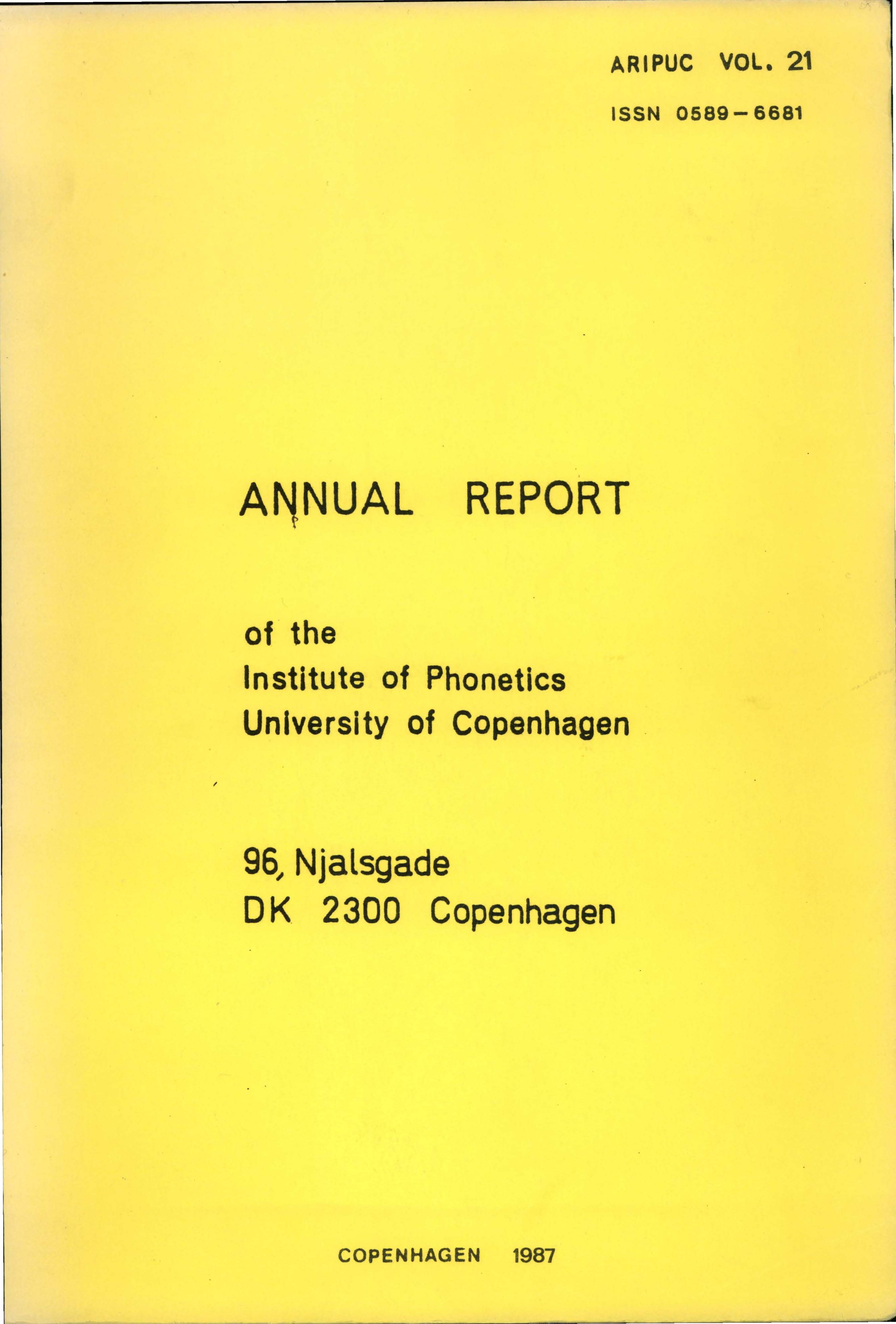A phonetic study of the stød in Standard Danish
DOI:
https://doi.org/10.7146/aripuc.v21i.131884Abstract
Chapter I gives a brief survey of phonological interpretations of the Danish stød, the dialectal and historical background, and previous phonetic investigations.
Chapter II gives an account of the material, subjects and procedures used in the present investigation.
Chapter III contains the results. In accordance with Svend Smith a distinction is made between the first and the second phase of the stød.
The first phase is characterized acoustically by a higher pitch level and often a higher intensity level than syllables without stød, and by a relatively high subglottal pressure and airflow, thus generally by a relatively high expenditure of energy. In the second phase, the stød phase proper, there is a strong decrease in intensity, particularly in the lower part of the spectrum and, for the majority of the speakers, a noticeable decrease in fundamental frequency and/or aperiodicity. Moreover the airflow is low, and inverse filtering shows a decreasing amplitude of glottal flow peaks. There is also a slight decrease in subglottal pressure, and all speakers have a constriction of the vocal folds and often of the ventricular folds as well, but with large interindividual variation as to the degree of constriction. On the boundary between the first and the second phase most speakers have a strong contraction of the vocalis and lateralis muscles, obviously preparing for the glottis constriction of the second phase.
Chapter IV discusses the stød in relation to phonation types and concludes that the stød is closely related to creaky voice though without sharing all of its characteristic features.
Moreover the causal relations among the various properties of the Danish stød are discussed. The author cannot follow Svend Smith in assuming that a sudden contraction and relaxation of the respiratory muscles resulting in a quick rise and fall in subglottal pressure, constitute the primary factor. There is rather an independent contraction of a number of muscles, and neither the high pitch in the start nor the fall in pitch and intensity in the second phase can be explained by the subglottal pressure contour. The high pitch level in the start may be explained by activity in the cricothyroid, and the decrease in pitch and the low intensity in the second phase is probably due to the glottis constriction, although the fact that the decrease in intensity starts rather early, raises some problems.
Finally the question of the origin of the stød is taken up again. It is suggested that the stød in Danish perhaps originated from a reinforcement of the first syllable due to reduction and loss of a following syllable in common Scandinavian. The reinforcement may have been accompanied by a rise in pitch so that developments in different directions (involving stød or tonal accents) were possible.
Downloads
Published
How to Cite
Issue
Section
License
Copyright holder author

